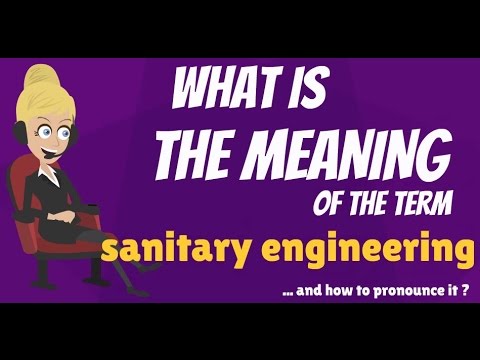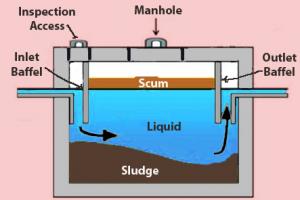Sanitary & Environmental Science Engineering Definitions

Sanitary Engineering:
Sanitary engineering is the application of scientific or mathematical principles with to the field of sanitation, especially in regards to its effect on public health. Sanitation is the hygienic means of preventing human contact from the hazards of wastes to promote health.
Wastewater:
Wastewater is any water that has been adversely affected in quality by anthropogenic influence. It comprises liquid waste discharged by domestic residences, commercial properties, industry, and/or agriculture and can encompass a wide range of potential contaminants and concentrations.
Sewage:
Sewage is one type of wastewater and is a major actual or potential source of pollution.
Effluent
Effluent is an out flowing of water from a sewage treatment facility or the wastewater discharge from industrial facilities.
Sewer:
Sewer may refer to:
- Sanitary sewer, a system of pipes used to transport human waste
- Storm sewer, a collection and transportation system for storm water
- Combined sewer, a system performing both the functions of a sanitary sewer and a storm sewer
Greywater
Greywater, also known as sullage, is non-industrial wastewater generated from domestic processes such as dish washing, laundry and bathing.
Waste management:
Waste management is the collection, transport, processing, recycling or disposal of waste materials.
Garbage:
Garbage may refer to: Waste, also known as trash or junk unwanted or undesired material
Infiltration (hydrology):
Infiltration (hydrology), downward movement of water through soil; water entering the sewers from the ground. Whereas, inflow is the entering of water into the sewers from the surface sources through cracks in manhole, etc. Exfiltration is the opposite of infiltration.
Sanitary sewer:
A sanitary sewer (foul sewer) is a type of underground carriage system for transporting sewage from houses or industry to treatment or disposal.
Sewage treatment, or domestic wastewater treatment, is the process of removing contaminants from wastewater, both runoff (effluents) and domestic. It includes physical, chemical and biological processes.
Anaerobic digestion
Digestion of organic matter by anaerobic microbial action, resulting in the production of methane gas
Facultative aerobes/anaerobes
Microbes having the ability to live either with or without oxygen
Attached growth
Fixed microbial growth on the media surface in a trickling filter.
Suspended growth
The free-moving microbial culture used in the biological treatment.
Biodegradable
Capable of decomposition by living matter
Contaminated site
A landfill into which hazardous polluting waste has been dumped
Environmental Impact Assessment (EIA)
A review to which all commencing projects must be subjected with regard to their impact on the environment.
Landfill
A repository in the ground for unwanted waste.
Landfill gas This is produced principally from the anaerobic decomposition of biodegradable organic waste and includes ammonia, carbon dioxide, carbon monoxide, hydrogen, hydrogen sulfide, methane, nitrogen and oxygen.
Leachate Liquid, composed of external rainfall, groundwater, etc. which has percolated through solid waste and has extracted biological and chemical, dissolved or suspended materials.
Life Cycle Assessment (LCA):
The assessment of the steps in a product life cycle, including: raw materials acquisition, bulk material processing, materials production, manufacture, assembly, use, retirement and disposal.
Point-source pollution from sources which are easily identified, e.g. slurry tank.
Solid Waste
All the wastes arising from human and animal activities which are normally solid and are discarded as useless or unwanted.
Waste Minimization
The general trend in developed countries to reduce the quantities of waste material produced.






